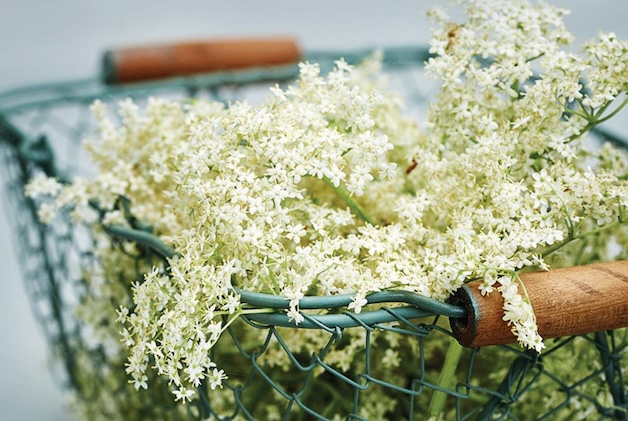Elderflowers are in full bloom and elderflower cordial could possibly be the ultimate summer drink. Here's a fail-safe recipe.
Elderflower cordial is delicious with sparkling water, sparkling wine or champagne. The secret is to pick the elderflower heads on a sunny day before it gets very hot, and use them as soon as possible. And make sure you pick cream blossoms, not white.
The best elderflower cordial recipe
For elderflower cordial you need to lay in the following ingredients: lemons, granulated sugar and citric acid. Then on a warm, dry day go and gather elderflower heads, selecting those that are newly opened for first choice. Be careful to minimise the amount of main stalk attached, as this smells (and therefore tastes) of tomcats rather than high summer.
Method
For every 30 flower heads
- 2 pints of boiling water
- 3lb (1.35kg) sugar
- 2oz (50g) citric acid
- 4 lemons, thickly sliced.
Pour the boiling water over the flower heads along with the other ingredients. Mix together, and do not worry if the flowers blacken. Leave for four days, stir daily, and squish the lemons to get all the juice out.
After the four days strain through muslin or similar, and it is ready to use, if rather cloudy. If you are really fussy, you can filter through a jelly bag, but it does nothing to improve the taste. Personally, I squeeze it through the muslin to get as much as possible out, and therefore make it more cloudy.
How to keep elderflower cordial
If you bottle it and store in the fridge the cordial will keep for several weeks, although it does ferment slowly. However, do not be put off by a little puff of gas when you open the bottle. It does not change the flavour, and if it mattered much my wife and I would be long dead. For longer-term storage we freeze it in plastic containers and thaw it as needed, keeping a bottle on the go in the fridge.
To drink, simply dilute like squash, using fizzy water if preferred, and add ice and a slice of lemon. You can drink it still, but the bubbles lift the flavour and that heady summer scent.
Elderflower cordial makes a wonderful flavouring for many dishes, especially the juice in a fruit salad. It is a great partner to the tartness of early summer gooseberries; the best combination is in gooseberry and elderflower ice-cream which is made with a cream rather than a custard base, and to heck with the calories. Find The Field’s elderflower recipes here.
This article was originally published in 2022 and has been updated.





